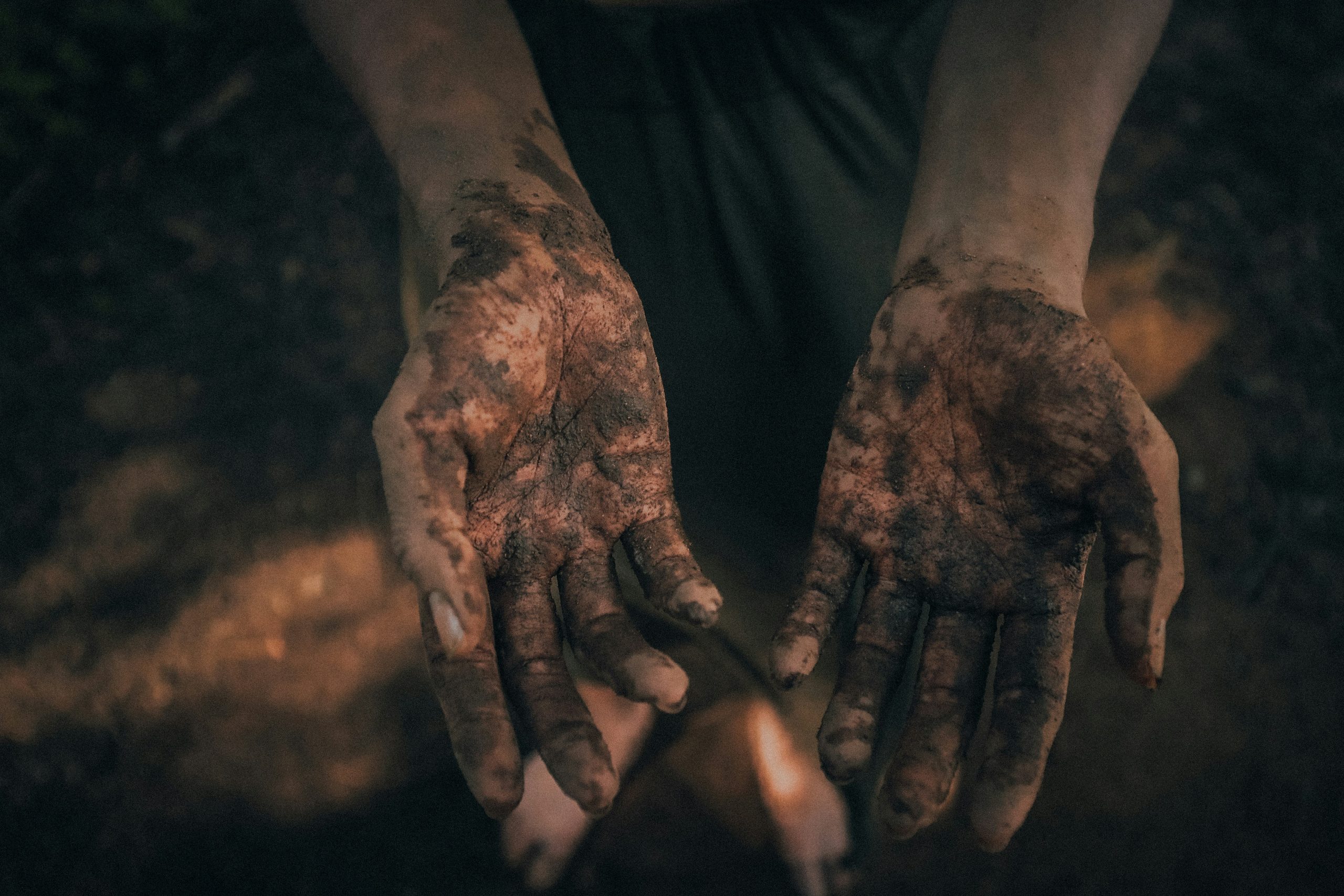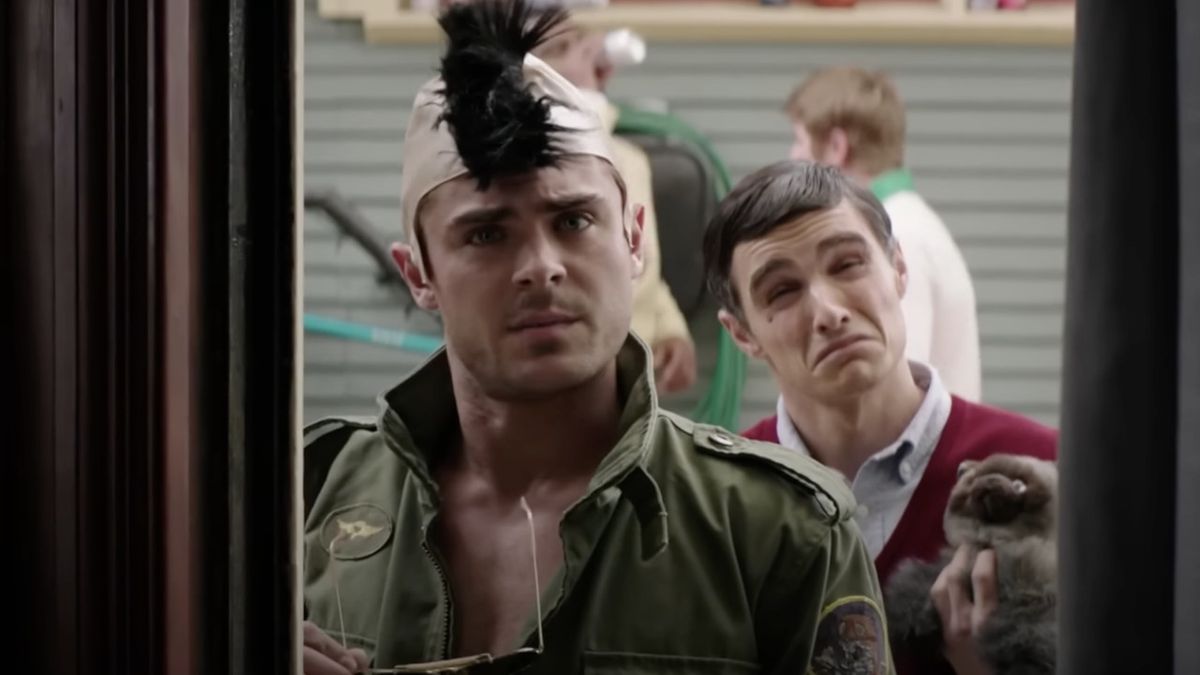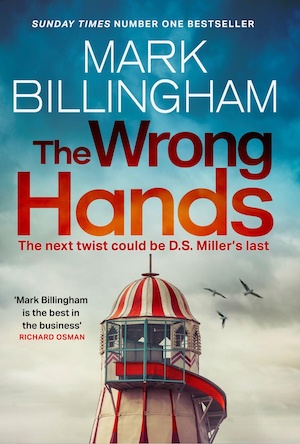Maggie Nye hopes that her debut novel, The Curators, will “unsettl[e] the reader in a productive way.” I present this book to you as a reader unsettled.
The Curators is set in 1915 Atlanta against the backdrop of the murder of Mary Phagan, a 13-year-old laborer at a pencil factory, and the subsequent trial, conviction, and lynching of the Jewish factory owner, Leo Frank. The narrative follows five adolescent girls who are obsessed with the trial, with “their Leo,” and with each other—who, after the lynching, create a golem in Frank’s image. The Curators is a haunting blend of historical fiction and magical realism. It’s a story about racism and sexism in the American South and the power—and dangerous electricity—of girls’ friendship.
In a basic sense, this book is a retelling, of both a true historical event and of a well-worn parable. But told from the collective and individual perspectives of these five girls, the story becomes much more: not simply a retelling, but a challenge to dominant narratives; an interrogation of the way archives can flatten or animate our understanding of history; a dare. The novel takes on these ideas with shiver-inducing attention to the possibilities of language, through both its prose and its plot.
Nye and I first met nearly a decade ago at a writing workshop, where she was working on the short story that would become The Curators. Over Google Docs, we discussed how researching and writing the book changed her understanding of truth and loyalty, her affinity for complicated narrative voices, fiction as a response to political rupture, and what makes a story even better than reality.
Rachel Ranie Taube: The Curators manages a fascinating feat of point-of-view: much of the book, especially in the first half, is written in the first person plural “we” perspective of five girls who call themselves the Felicitous Five. There is a darkness and viscerality in their undifferentiated perspective. They are too close. It’s expressed most literally in the “spider game” the girls play, intertwining their limbs until they can’t tell themselves apart (perhaps one of the book’s first “monsters”). Their unity is protective when they wander the streets. And when they lift a brick or build the golem, they are dangerous. As the book proceeds, the individual girls become visible to the reader, and Ana Wulff, who actually keeps the golem in her home, begins to have “wicked thoughts” about the others. To me, this progression seems to mirror the way the book makes the pop cultural artifact of the Leo Frank story something individual, concrete, personal. Could you talk about how you came to this narrative voice(s)? Were there any other books that inspired it?
Maggie Nye: Your observation about the individuation of the Felicitous Five unit reflecting the consumption and subsequent personalization of Leo-Frank-as-story is so smart, and exactly right. Once the man is abstracted into a story, he’s adaptable, mythologizable. The same is true, actually, for Mary Phagan, though while Frank’s legacy has many times been reinterpreted (victim, carpetbagger, pervert, stoic hero, scapegoat), Mary Phagan has only ever been interpreted one way. More on that later, though.
I have a particular fondness for uneasy, complicated narrative voices, and especially for writing in the collective voice. In fact, I wrote about my love of this needful narrative POV recently for Literary Hub. And while the books I discuss there are centered on the relationships of girls and women, the book that really sparked my love for the collective narrator was Justin Torres’s We the Animals—one of my all-time favorites. The honest answer to this question is that I was acting under the ecstatic influence of Torres’s prose when I wrote the short story that became The Curators. The monstrous need of the brothers in that book, the ferocity of their desires, the hugeness of it was so terribly palpable to me as a reader.
Another answer (also honest, though not as immediately articulable to me early on) is that I was interested in the unique perspective of adolescence in the midst of public trauma. Young adolescents such as the girls who narrate my novel are of course keenly aware of the kinds of trauma that saturate the cultural atmosphere—in spite of our best efforts to shield them from it—but they also have access to the ready fantasies of childhood. I was interested in violence mediated through imagination, and in the utility of fantasy.
RRT: Very early on, this book tells us not to trust it: “All stories that have survived to retelling have another version. As many versions as tellers—or more.” Chapters of The Curators alternately begin with real contemporaneous quotes from an Atlanta newspaper and quotes from Ana Wulff’s fictional diaries; they’re presented as equally reliable sources. For me, this works so well because it allows this book to avoid a “true crime” telling of the murder/lynching, and instead invites the reader to question each detail. Could you talk about the process of researching this book? I’m curious how you used that research—and respected the real-life brutality of the rape and murder—while retaining the narrative freedom to write Ana Wulff as a character. What “truths” did you most want to stay loyal to?
MN: My understanding of truth and of loyalty changed pretty drastically through the research process. Most people researching the story for the first time encounter a narrative about Leo Frank’s wrongful conviction and the rampant anti-semitism that led to his lynching (that is unless you happen to trip along your research path and fall down the white supremacist rabbit-hole, a niche but significant corner of the Frank-scape represented online). I do not dispute at all that anti-semitism played a significant role in Frank’s trial and led, ultimately, to his lynching. But what is often left out of this story is the tremendously bigoted defense Frank’s lawyers mounted against Jim Conley, the Black janitor at the National Pencil Company where Frank and Phagan worked—the former as the superintendent and the latter as a laborer. The defense relied heavily on white (Christian) men’s volatile anxieties in the industrializing South, about the imagined sexual threat of Black men in spaces over which white men had no control, like the Pencil Factory, where white women worked alongside Black men. It’s possible to go on like this, calculating the weight of the historical prejudices suffered by Frank and by Conley. Indeed there are entire books that do so, meting out harm suffered on one page and potential guilt on the next.
But what they all tend to minimize—even the ones that call attention to the problem of this minimization—is the murdered girl, Mary Phagan. Many, many other accounts honor Leo Frank; I wanted my book to be animated, at least in part, by the possibilities of Mary Phagan. As you reference in your question, Phagan, a month shy of fourteen, was assaulted and murdered in the factory where she labored fitting sheet brass to pencil shafts. This is inherently tragic, but her mythologization is also inextricably linked to her beauty and her virginity. Her beauty and sexual purity were gifts owed—and denied—to the culture of white southern manhood. And in her death, she continues to labor in her mythologization as a political symbol. Her death has been made into a heroic struggle against impending rape and the defense of her virginity.
I really had to search to find traces of Mary beyond her affability, her prettiness, the precociousness of her body’s maturity—promising womanhood to its many viewers. And I found some hints, but that’s all they were: a solo movie date, a fit of giggles shared with her brother at a church play. Still, I made it a project of my novel to imagine versions of Mary that exceeded her mythology. I wanted to imagine Mary’s rebellions, to allow her a remembrance not cast in the politicized mold of raped white southern womanhood. I tried to give the novel an ending, at least, that let Mary speak.
RRT: I love that way of describing the ending. I very badly don’t want to spoil the ending for our readers, but I’ll just say that it’s an absolutely mind-bending and beautiful one. One of the possibilities for Phagan, you found in your research, is that she might not have been raped, as the prosecution claimed. Could you describe what you found, and what questions that opened up for you?
MN: Before I go into this, I want to state clearly that her murder was horrific and that her body showed signs of extensive trauma at multiple sites. However, it’s true that evidence of her rape was inconclusive, and that the Fulton County medical examiner found “no violence to the parts” (though sexual assault is certinly possible). Further, when cross-examined, he said that her hymen was not intact, which suggests that she was sexually active before her murder.
I initially conceived of this as hopeful.
Mary’s dead body was converted into a political symbol that only worked if she was a virgin, and it was exciting to think that she might actually have lived in a way that contradicted that post-mortem reading. It was thrilling to think that she might have had some sexual agency, sought sexual pleasure, but even as I had these thoughts, I knew they were wrong-headed. She wasn’t even fourteen when she died, so almost any version of sexual life she had would have been ruled by dramatic power imbalance and likely coercion, if not outright violence. But I couldn’t shake this sexually empowered, if naive, version of the living Mary, so I gave these thoughts to my narrators, let them think the wrong, hopeful version of Mary on my behalf.
4. You tweeted something earlier this year that struck me, in which you write that “complicated” or “tortured” narrative voices might “reflect…polyphonic media/news culture & mistrust of centralized knowledge production.” I am so interested in this idea, especially given how the media industry has changed in the past decade—could you elaborate?
You’ve called me out on a half-baked idea!
Recently, the Atlanta Journal-Constitution ran a short piece on my use in the book of the historical newspaper the Atlanta Constitution (AJC’s predecessor), and the reporter who wrote the piece was oddly defensive of the book’s critical exploration of reporting and the instability of facts. “That was then, perhaps,” she wrote of the book. “This is now. I’ll go to my grave believing newspapers are a force for good.” I, too, believe newspapers are a force for good. But what a funny fallacy. As though our fore-reporters and mediamakers were uniquely vulnerable to bias, misinterpretation, profits-led decision making, and demagogy.
Her beauty and sexual purity were gifts owed—and denied—to the culture of white southern manhood.
Polyvocality is not new to the literary canon. Literature often responds to historical ruptures with mistrust of a centralized voice (we can think, here, of modernism as a response to the violent ruptures of World War I), and OK, maybe it’s my that was then, this is now perspective speaking, but don’t we seem to be in a constant state of rupture? War and armed conflict, global political instability, state-sanctioned brutality, climate devastation, inescapable surveillance, and on and on.
Our nearly-cyborgic connection to our technology means that we’re always consuming information, always consuming voices, and our state of constant rupture means we’re suspicious of all of them. We live in amplification boxes of loud and dubious claims. And of course, the world of literature is responding. I confess it’s very possible that my own reading tastes are not representative of the entire publishing landscape and that I am a magnet for such books, but in my own reading, I’ve seen an explosion of narrative disruption, doubt, ghosts, polyvocality, narratives spliced with other forms (especially reference or encyclopedic forms), etc. To name only a sampling of books I’ve read in the past couple months, in no particular order: North Woods, Jawbone, The Story Game, Our Share of Night, The World Keeps Ending and the World Goes On. These are wildly different books, but all are, I believe, responding narratively to these conditions. And several, I should add, are responding with dogged hope.
RRT: My apologies for the call-out, but I’m glad I did! I love this idea of literature as response to rupture, and I actually want to talk about how The Curators fits into that list of books. The theme of truth and fiction comes up many times in the novel, and I was struck in particular by the passage where the girls come into the possession of a rope. Not the real one on which Leo is hanged, but “once they hold it, it’s as good—better even—than authentic lynch line.” I bring up this passage in part because it feels inevitable that readers of this book will experience the racism of 1915 Atlanta against the backdrop of modern-day racism. Can the stories we tell ourselves about objects, or about our society, actually change the truth? What makes stories feel “better even” than reality?
MN: I certainly think so. What we’re talking about here is satisfaction (which is, actually, an impulse I believe we must resist). First of all, I think reality (we might ask what reality is beyond storytelling, but I’ll leave that for another conversation) doesn’t usually feel good. Most day’s headlines: major bummers. And the Felicitous Five feel that too—that’s the urge to curate, to arrange the materials of life into a satisfying story, one that makes sense and doesn’t make you feel ooky, and certainly one that doesn’t make you feel complicit. Also important to this kind of better-than-reality story, I think, is that it is quarantined. It is not allowed to be in dialogue with other stories, because dialogue might reveal uncomfortable complexity. Stories in silos. The Felicitous Five play a sort of game where they siphon all their bad, uncomfortable feelings and anxieties into a far-off person they call The Smutch. At one point, for example, they make Archduke Franz Ferdinand The Smutch, and people do this all the time. Find a far-off antagonist to maintain the satisfaction of their better-than-reality story.
RRT: Let’s turn away from reality altogether. As Ana points out, there are many versions of the golem story, too. In your book, he’s sweet, disturbing, smart, an object of desire, an object of fear. I experienced him as much more of a character than the traditional golem; for me, it’s an example of how magical realist elements can just light up an old story. What about this particular parable made you bring it to bear on the story of Leo Frank?
The girls in this collective, that desire is for control, knowledge, and power—all of which they are denied.
MN: I think the figure of the golem rose up, imaginatively, as a counterforce to the Night Witch—an ambiguous figure the girls invent from a combination of reportage, fear, and racial othering. In fact, the original title of the short story that grew into The Curators was “The Golem and the Night Witch.”
I saw, in the figure of the golem, endless possibilities. As have other authors—Cynthia Ozick, Michael Chabon, and most recently Adam Mansback, to name only a few. I was particularly attracted to the idea of the golem as a projection of its creators desires. He is a constructed object into which my narrators continuously empty their bottomless desires. In one sense, he is the ultimate Smutch, but he is also their ultimate hope for salvation.
RRT: The theme of hunger also appears again and again in this book. From literal hunger in the opening lines (“We used to sit for hours in our clubhouse with our ears to each other’s stomachs, listening to how loud our hunger could grow.”); to the parable of the golem (whose hunger, in one version of the story, leads him to destroy his own parents and town); to the girls’ adolescent sexuality and hunger for stories about Leo (hunger as in desire, obsession); to the mob’s anti-semitic hunger for justice against Leo. How do you think about hunger as a driving force in this story? What hunger drove you to write this particular book?
MN: I think the collective viewpoint is fundamentally one of desire. Any time that collective appears—and especially with adolescents—it’s a way of amplifying what is latent. The collective has more bodies, more wants, more grubby hands and sticky mouths. And for the girls in this collective, that desire is for control, knowledge, and power—all of which they are denied; it’s a response to lack. But it’s also a budding sexual desire. For Frank, yes, because he’s a (semi)appropriate object of their desire, but also, I think, for Mary and for each other. They live in a repressive society, one where heterosexuality is the only acceptable model, and virginity is paramount for unmarried women. Women are evaluated by their perceived “virtue,” and nothing could be less desirable to the girls in this novel than virtue.
As to my own desire, my own hunger, that is a question on which I continue to ruminate (in a bovine way—chewing, rechewing). One answer is that I’m very interested in how history is mythologized, and literature plays an important role in this process. There is a lot of literature already on the subject, though all of it is nonfiction (excepting one misguided effort from David Mamet), and it’s easy to understand why: such a striking portrait of American trauma and violence. But, as I hinted earlier, I have a healthy distrust in the stability of facts. I think it’s important to probe them, to interrogate them, to recombine them, put them in dialogue, and see if they can say new things, complex things. Fiction can hold space for history’s contradictions, and I think that archive is vital.








